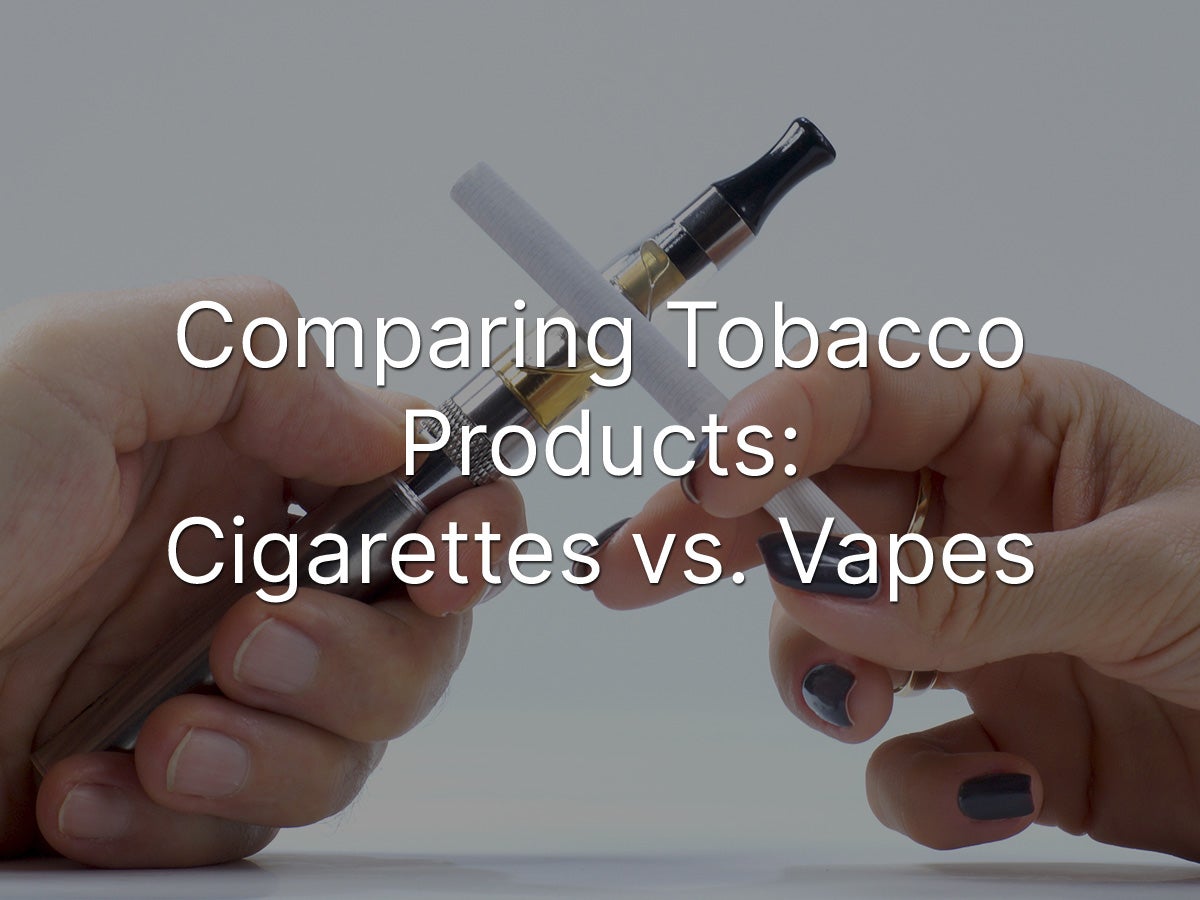Your cart is currently empty!
Comparing Tobacco Products: Cigarettes vs. Vapes

In the modern world of tobacco products, cigarettes and vapes represent two of the most popular methods of nicotine consumption. As people seek alternatives to traditional smoking, the debate between cigarettes and vapes has become increasingly relevant. This article aims to provide a comprehensive comparison of these two products, exploring their compositions and user experiences. By understanding the differences and similarities between cigarettes and vapes, individuals can make more informed decisions about their nicotine consumption.
Smoking Alternatives
The Composition of Cigarettes
Cigarettes have been a staple of nicotine consumption for decades. The composition of cigarettes includes several key components:
Tobacco
The primary ingredient in cigarettes is tobacco, which is derived from the leaves of the Nicotiana plant. This plant contains nicotine, a naturally occurring stimulant that is highly addictive. The tobacco used in cigarettes is typically a blend of different types, such as Virginia, Burley, and Oriental, to create a consistent flavour profile.
Paper
The paper that encases the tobacco in a cigarette is specially designed to burn at a controlled rate. It ensures a consistent smoking experience and helps to regulate the burn speed.
Filter
Most modern cigarettes come with a filter, which is intended to reduce the harshness of the smoke. Filters can trap some tar and other harmful substances.
Additives
Cigarette ingredients also include a variety of additives, which serve to enhance flavour, preserve freshness, and improve the overall smoking experience. Common additives include sugars, menthol, ammonia, and cocoa.
The Rise of Vaping
Vaping has emerged as a popular alternative to traditional cigarettes, particularly among younger adults. Vaping devices, commonly known as e-cigarettes or vapes, offer a different method of nicotine delivery that does not involve burning tobacco.
Components of Vapes
Vapes are composed of several key components:
E-Liquid
The e-liquid, or vape juice, is the substance that is vaporized in a vaping device. It typically contains nicotine, flavourings, propylene glycol, and vegetable glycerin. Unlike the composition of cigarettes, e-liquids do not contain tobacco.
Atomizer
The atomizer is part of the vape device that heats the e-liquid, turning it into vapour. This process is significantly different from the combustion process in cigarettes.
Battery
The battery powers the atomizer, making it a crucial component of the vape device. Rechargeable batteries are common in most vaping devices.
Mouthpiece
The mouthpiece is where the user inhales the vapour. It can come in various shapes and sizes, depending on the design of the vaping device.
Health Considerations: Cigarettes vs. Vapes
When considering health factors related to cigarettes and vapes, it’s important to understand their respective impacts on personal well-being and lifestyle choices.
Cigarettes
Cigarettes have been a traditional choice for nicotine consumption, offering a familiar ritual and experience for many users. The composition of cigarettes includes a blend of tobacco and additives that contribute to their distinctive flavour profiles.
Vapes
Vapes provide a modern alternative to traditional smoking methods. They utilize e-liquids that come in a variety of flavours and nicotine strengths, catering to individual preferences. Vaping also offers a customizable experience without the smoke and odour associated with cigarettes.
Understanding these aspects can help individuals make informed decisions about their nicotine consumption habits.
User Experience: Cigarettes vs. Vapes
The user experience differs significantly between cigarettes and vapes, influencing personal preferences and choices.
Cigarettes
Cigarettes offer a familiar and traditional smoking experience. The ritual of lighting a cigarette and the tactile feel of holding it are aspects that many smokers find satisfying.
Vapes
Vapes provide a more modern and customizable experience. Users can choose from a wide range of flavours and nicotine strengths, tailoring their vaping experience to their preferences. Vapes also produce less odour and secondhand smoke, making them more discreet and socially acceptable in many settings.
Vape vs Smoking Weed
The comparison between vaping and smoking weed also adds another dimension to the discussion of nicotine and substance use. Both methods of consuming cannabis have their own set of advantages and disadvantages.
Vaping Weed
Vaping weed involves heating cannabis to a temperature that releases cannabinoids without burning the plant material. This method is often considered healthier than smoking because it produces fewer harmful by-products. Additionally, vaping allows for more precise control over dosage and is often preferred for its convenience and discreetness.
Smoking Weed
Smoking weed, on the other hand, involves the combustion of cannabis; it remains a popular method due to its simplicity and the immediate effects it provides.
The Appeal of Alternatives
As the debate between vape vs smoking weed and cigarettes continues, it is clear that both alternatives have their unique appeals.
Cigarettes
Cigarettes continue to be popular due to their tradition and the specific experience they offer. The ceremonial aspects of smoking, combined with the quick nicotine hit, make cigarettes a preferred choice for many.
Vapes
Vapes are gaining popularity, particularly among those seeking a potentially less harmful alternative. The ability to customize the vaping experience with different flavours and nicotine levels is a significant draw for many users.
Weed
In the context of cannabis use, the choice between vaping and smoking weed often comes down to health considerations and personal preferences. Vaping weed is seen as a healthier option, while smoking weed remains favoured for its immediate effects and simplicity.
Conclusion
In conclusion, the comparison between cigarettes and vapes highlights significant differences in their composition, health implications, and user experiences. In contrast, cigarettes offer a traditional smoking experience. Vapes, on the other hand, provide a modern and customizable alternative that may pose fewer health risks, though the long-term effects are still being studied. Additionally, the comparison between vape vs smoking weed shows that both methods have their unique benefits and drawbacks. Ultimately, understanding these differences can help individuals make informed decisions about their nicotine and substance use.
FAQs
What is the main difference between cigarettes and vapes?
The main difference between cigarettes and vapes lies in their method of nicotine delivery: cigarettes burn tobacco, while vapes vaporize e-liquid without combustion.
Are vapes safer than cigarettes?
Vapes are generally considered to be less harmful than cigarettes because they do not involve combustion, which produces many of the toxic chemicals found in cigarette smoke. However, they are not completely risk-free.
What are the common ingredients in a cigarette?
The composition of cigarettes includes tobacco, paper, a filter, and various additives such as sugars, menthol, and ammonia to enhance flavour and the smoking experience.
How do vaping and smoking weed compare in terms of health?
Vaping weed is generally considered healthier than smoking it because it avoids combustion and offers a potentially cleaner inhalation method.
Why do some people prefer vaping over smoking cigarettes?
Many people prefer vaping over smoking cigarettes because vapes offer a customizable experience with different flavours and nicotine levels and produce less odour.
